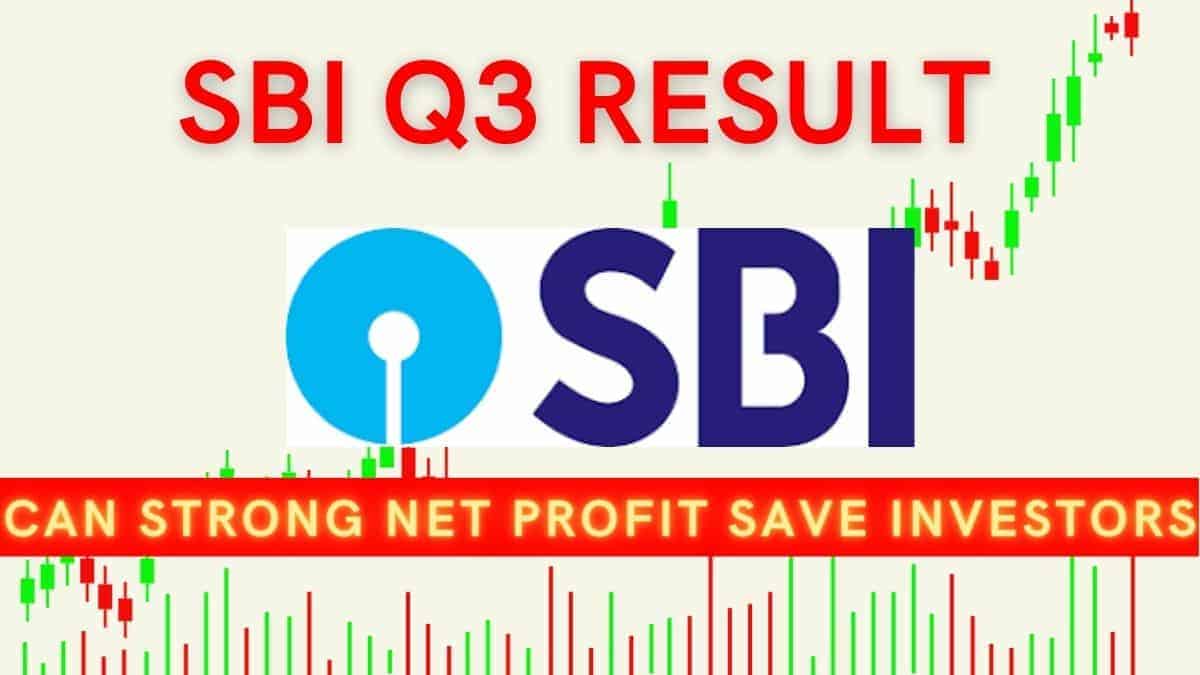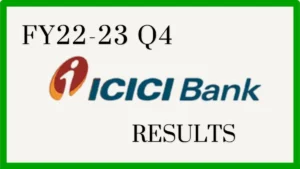SBI’s Q3 Result Outperforms Expectations with 68% YoY Increase in Net Profit
SBI’s Q3 result: The State Bank of India (SBI), India’s largest lender, has reported a stunning 68% surge in its Q3 net profit. This result has exceeded expectations and made waves in the market. Investors and analysts are taking note of SBI’s impressive performance, as demonstrated by its strong net profit and its resilience in the face of challenges in the banking sector.
A Brief Overview of SBI
State Bank of India (SBI) is India’s largest public sector bank and one of the largest banks in the world, with a rich history that dates back to 1806. It offers a wide range of financial services and products to individuals, small and medium-sized businesses, as well as large corporations. SBI has the capability to serve its customers from all over the world with over 22,000 branches, 59,000 ATMs, and a presence in 37 countries.
SBI has a variety of product portfolio that caters to everyone’s financial needs. It includes savings and current accounts, fixed deposits, home loans, personal loans, credit cards, and a variety of investment and insurance options. The bank is also ahead of the curve in digital banking and provides online and mobile banking services. This makes banking easier and more accessible for its customers.
With a solid financial standing, a commitment to customer satisfaction, and innovative products and services, SBI has earned the trust of millions of customers both in India and abroad. People recognize SBI for its reliability, stability, and reputation. In recent years, the bank has consistently reported strong financial results.
In-Depth Look at SBI’s Q3 Result
Net Profits
The numbers are quite impressive on all fronts. The bank’s net profit increased by a staggering 68%, reaching a total of Rs 8,104 crore. This is compared to Rs 4,674 crore during the same period last year. Additionally, the net interest income (NII) grew by 24% to reach Rs 28,341 crore. This is a clear indication of SBI’s ability to attract more depositors and increase its loan portfolio. This contributes to its overall profitability and resilience as the best PSU bank.
Retail Segment
The bank’s retail segment also performed exceptionally well. It delivered a 25% increase in net profit to Rs 5,116 crore. This growth was driven by strong loan growth and a decrease in provisions for bad loans. Compared to the previous quarter, SBI’s Q3 result showed a 3% increase in net profit compared to the same quarter last year. The growth was even more substantial at a 68% increase.
Asset Quality
In addition to its strong financial performance, SBI’s asset quality has also improved. The bank’s gross non-performing assets (GNPAs) ratio, which measures the percentage of loans that have gone bad, has declined by 63 basis points compared to last year, reaching 7.33%. The bank’s provisions and write-offs have also declined, further boosting its overall financial performance.
SBI’s capital adequacy ratio, a measure of the bank’s financial strength, remains strong at 15.03%. This is well above the minimum regulatory requirement of 11.5%, giving the bank plenty of room for future growth and profitability.
When considering SBI’s Q3 results, it’s important to understand the current economic climate in India. The industry was facing challenges such as high inflation and slow economic growth throughout the year. But SBI has managed to maintain its position as one of the largest and most profitable banks in the country.
In fact, when compared to other financial institutions, the performance of SBI stands out. Other banks have reported mixed sets of results. But SBI’s strong performance highlights its ability to adapt to changing market conditions and stay ahead of the competition.
Impact of the SBI’s Q3 Result
SBI’s Q3 earnings growth has a major impact on the market and its shareholders. The impressive increase in net profit has boosted investor confidence in the bank and its future prospects. The impressive numbers of SBI have contributed to a positive outlook for the financial landscape of the country. This showcases the strength and growth potential of the banking sector in India.
The future looks bright for SBI and other public-sector banks in India. But the bank still faces challenges and risks, including increased competition, regulatory changes, and the impact of the COVID-19 pandemic. Despite these challenges, SBI’s strong financial performance and growth potential are likely to continue in the coming years.
Share Price Analysis after SBI’s Q3 Result
SBI share: SBI is a popular banking high beta stock among investors and traders. The share price of SBI is currently trading at 544.2 on the NSE. Technical analysis shows that the stock’s 20-day EMA is at 569.78, the 50-day EMA is at 582.85, the 100-day EMA is at 574.48, and the 200-day EMA is at 548.78.
The share price of SBI has fallen by about 84 points or 15.7% from its 52-week high. However, the current price is still higher than its 52-week low of 425, by 119.2 points or 27.9%. This means that SBI’s stock price has gone through a lot of ups and downs in the past year.
According to Fibonacci extensions, the 38.2% level is at 550, the 50% level is at 565, the 61.8% level is at 580, and the 78.6% level is at 602. The all-time high for SBI shares is 629.55, and it has trendline support at 500, 480, and 460. The next major resistance level is at 570, which was a key support zone in the past.

The daily chart for SBI shares shows that it has broken its previous higher highs and higher lows formation, resulting in a slight downward trajectory. However, the weekly chart still holds the higher highs and higher lows pattern. To confirm a violation of this pattern, the shares need to close below 480 on a weekly basis. In terms of monthly support, the key level to watch is 500. If the stock remains above this level, it should be considered a long-term bullish signal.
What Should Investors and Traders Do in SBI
For traders, it’s important to pay close attention to the trendline support levels at 500, 480, and 460, as well as the next major resistance at 570. Monitoring the weekly and monthly charts will give a better understanding of the stock’s overall trajectory.
If the stock manages to maintain support above 500, it may indicate a continued long-term bullish trend. However, if the stock falls below this level, it could signal a bearish shift in the market. Additionally, investors should pay close attention to SBI’s Q3 results and which may impact the stock’s performance. Based on the strong net profit, investors should consider whether this will be enough to shield them from potential losses or halt the stock’s decline.
Additionally, it’s important to take into account other factors such as the domestic economy, market trends, and global markets, in addition to technical analysis.
Conclusion
After SBI’s Q3 results, the bank’s future prospects look promising. The robust performance of the State Bank of India (SBI) is a confirmation of its resilience, stability, and growth potential. So we can expect continued success in the future. The strong Q3 result demonstrates the bank’s strong performance and growth potential and provides a glimpse into the future prospects of the banking sector in India.
The Q3 results of the SBI have a wide-ranging and profound impact. Firstly, it shows that the bank is well-equipped to weather any economic storms and continue its strong growth trajectory. Secondly, it’s a positive sign for investors and stakeholders, as the bank’s strong performance gives confidence in its ability to deliver returns to its shareholders.
The impressive results of SBI’s Q3 demonstrate the bank’s resilience and ability to thrive even in challenging market conditions. This bodes well for the future and provides a positive outlook for investors and stakeholders. As the Indian economy continues to recover, SBI is poised to take advantage of growth opportunities and maintain its position as a leading player in the financial sector.




